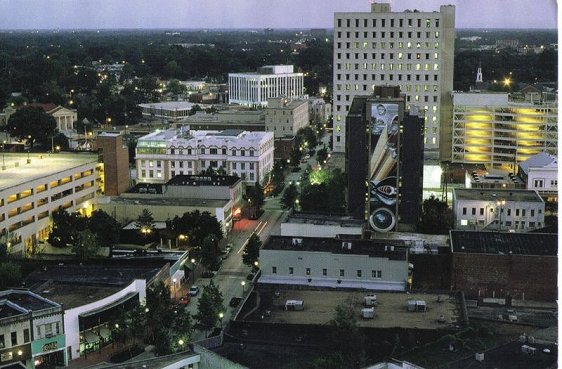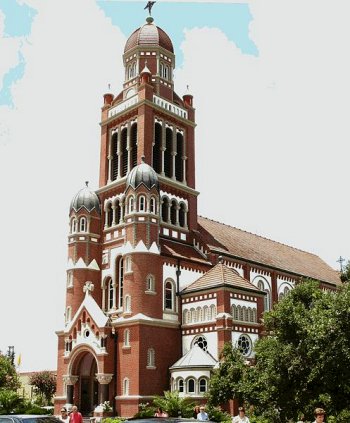Lafayette is a city in Louisiana, USA. The parish seat of Lafayette Parish, it covers 47.7 sq mi (123.5 sq mi) and has a population of 121,000 people (2011 estimate). Lafayette is the fourth most populous city in Louisiana. It is on the West Gulf Coastal Plain with the Vermilion River running through the heart of the city.
 Lafayette, Louisiana
Lafayette, LouisianaSource: https://commons.wikimedia.org/wiki/File:Lafayetteair.jpg
Author: Mc361210

Lafayette experiences a humid subtropical climate. The hottest months are July and August, when the average high temperature rises to 92°F (33°C). Coolest month is January, when the average low temperature drops to 43°F (6°C). July receives the most rain, at 6.7 in (17 cm).
Lafayette was founded in 1821 by a French-speaking Acadian named Jean Mouton. It was originally called Vermilionville, after the river running through it, but was renamed in 1884 in honor of General Gilbert du Motier, marquis de Lafayette, the French military hero who helped the Americans during the American Revolutionary War.
 St John Church, Lafayette
St John Church, LafayetteSource: https://commons.wikimedia.org/wiki/File:Lafayette_Louisiana_Stjohnchurch.jpg
Author: Mc361210

Lafayette is in primarily a farming area. Other industries of note include that of petroleum and natural gas. Due to its strong Cajun culture, it has become a tourist destination famous for Cajun culture and cuisine.
Visiting Lafayette
The main highways connecting Lafayette with the rest of the country are I-10 and I-45. The I-10 runs east-west linking Lafayette with Baton Rouge to the east and Lake Charles to the west. I-45 heads north towards Alexandria.Places of Interest in Lafayette
- Acadian Village
Cultural park where visitors can experience the Cajun culture. It has Cajun-style architecture furnished with Cajun-style furniture. - Lafayette Natural History Museum & Planetarium
Center combining a museum and a planetarium, this is where you can view works by Louisiana artists as well as learn about space in the planetarium. - National Wetlands Research Center
Center for protecting and increasing knowledge on the wetlands, including the mangroves and estuarine wildlife.
 Latest updates on Penang Travel Tips
Latest updates on Penang Travel Tips

Copyright © 2003-2025 Timothy Tye. All Rights Reserved.

 Go Back
Go Back